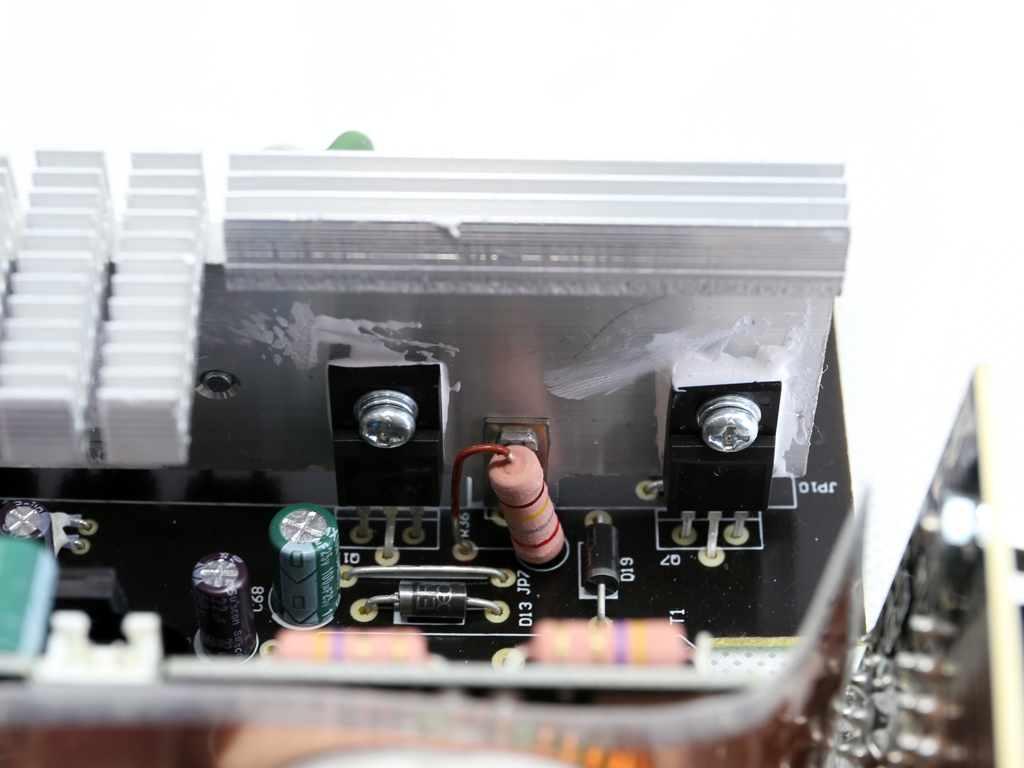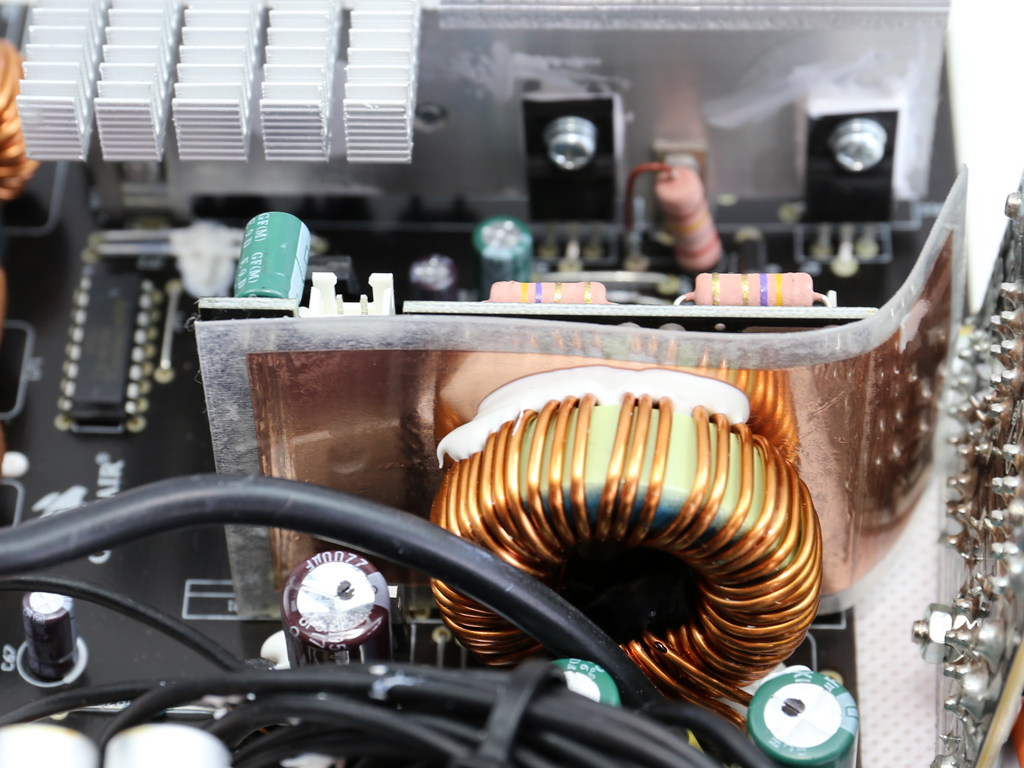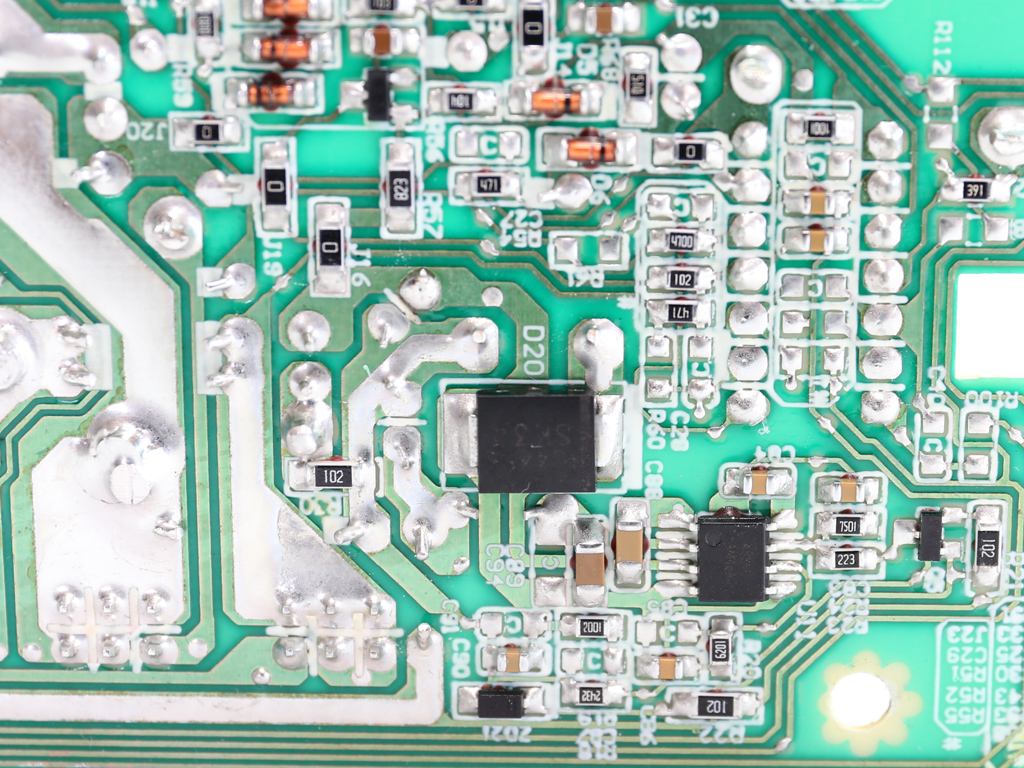Corsair CX650M PSU Review
Corsair's CX series consists of both non-modular and semi-modular units. It was recently upgraded with new members and improved versions of older ones. The CX650M is the third strongest member of the line, featuring 650W capacity and a 40°C rating.
Why you can trust Tom's Hardware
A Look Inside And Component Analysis
Parts Description
Before proceeding with this page, we strongly encourage you to a look at our PSUs 101 article, which provides valuable information about PSUs and their operation, allowing you to better understand the components we're about to discuss. Our main tools for disassembling PSUs are a Thermaltronics soldering and rework station, and a Hakko FR-300 desoldering gun.
| General Data | |
|---|---|
| Manufacturer (OEM) | CWT |
| Platform Model | - |
| Primary Side | |
| Transient Filter | 4x Y caps, 2x X caps, 2x CM & 1x DM chokes, 1x MOV |
| Inrush Protection | NTC Thermistor & Diode |
| Bridge Rectifier(s) | 1x GBU1006 (600 V, 10 A @ 100 °C) |
| APFC MOSFETs | 2x Fairchild FCPF190N60E (650 V, 13.1 A @ 100 °C, 0.16 Ω) |
| APFC Boost Diode | 1x STMicroelectronics STTH8S06D (600 V, 8 A @ 125 °C) |
| Hold-up Cap(s) | 1x Nippon Chemi-Con (400 V, 470 uF, 2000h @ 105 °C, KMW) |
| Main Switchers | 2x Infineon IPA50R280CE (550 V, 11.4 A @ 100 °C, 0.28 Ω) |
| Combo APFC/PWM Controller | Champion CM6800TX |
| Topology | Primary side: Double-Forward Secondary side: Synchronous Rectification & DC-DC converters |
| Secondary Side | |
| +12V MOSFETs | 4x Infineon BSC039N06NS (60 V, 65 A @ 100 °C, 3.9 mΩ) |
| 5V & 3.3V | DC-DC Converters: 3x UBIQ QM3006D (30 V, 57 A @ 100 °C, 5.5 mΩ), 3x UBIQ QM3004D (30 V, 40 A @ 100 °C, 8.5 mΩ) PWM Controller: ANPEC APW7159 |
| Filtering Capacitors | Electrolytics: Nippon Chemi-Con (105 °C, KY), SAMXON (105 °C), Su'scon (105 °C) Polymers: Nippon Chemi-Con, APAQ, Teapo |
| Supervisor IC | Weltrend WT7502 (PG, OVP, UVP, OCP, SCP) |
| Fan Model | Hong Hua HA1225H12S-Z (120 mm, 12 V, 0.58 A, 2200 RPM, sleeve bearing) |
| 5VSB Circuit | |
| Rectifier | 1x MBR2045CT SBR (45 V, 20 A) |
| Standby PWM Controller | On-Bright OB5269CP |




All CX units are made by CWT, and this one is based on a custom platform that's used exclusively by Corsair. The design is pretty good for a mainstream PSU with Bronze-class efficiency. Besides a synchronous design, where FETS regulate the +12V rail, a couple of voltage regulation modules handle the minor rails on the secondary side. In addition, the transient/EMI filter looks complete, and the bulk cap is provided by a respected Japanese manufacturer.




The first part of the EMI filter starts at the AC receptacle with a couple of Y caps. It continues as usual on the main PCB with two more Y caps, two X ones, two CM chokes, a single DM choke, and an MOV hidden well under a mountain of glue.
The single bridge rectifier is bolted on a dedicated heat sink. It is a GBU1006, which can handle up to 10 A of current, so it meets this unit's demands.



The APFC converter uses a couple of Fairchild FCPF190N60E and a single STMicroelectronics STTH8S06D boost diode. The smoothing (bulk) cap is provided by Chemi-Con (400 V, 470 uF, 2000h @ 105 °C, KMW). Although its capacity looks pretty low, it provides a long enough hold-up time to meet the ATX spec's requirements. Our only complaint is the low voltage rating, which comes close to the APFC's DC bus voltage (around 380 VDC).
An NTC thermistor protects against large inrush currents. A diode is installed before the thermistor, reducing power losses. Of course, a thermistor is essentially a resistor with temperature-dependent resistance. The higher its temperature, the lower its resistance, meaning that once it gets hot, energy losses on it are dramatically reduced.


The combo PFC/PWM controller is a Champion CM6800TX, which is widely used in 80 PLUS Bronze PSUs. It is soldered to PCB's business side. Close to it we see the supervisor IC, a Weltrend WT7502 that only enables the absolute necessary protection features.
Get Tom's Hardware's best news and in-depth reviews, straight to your inbox.


The primary FETs are two Infineon IPA50R280CEs, arranged into a double-forward topology.
We had to remove the main transformer to identify major parts like the primary FETs, along with components used by the +12V regulation circuit.



On the secondary side, a small daughterboard houses four Infineon BSC039N06NS FETs, responsible for regulating the +12V rail. The cooling of those FETs is handled by a number of bus bars and not by heat sinks. CWT uses this cooling method liberally in its recent implementations, and it appears to work well.




The electrolytic filtering caps are provided mostly by Samxon and Su'scon, while we also find a Chemi-Con KY cap that's likely used by the 5VSB rail. Besides electrolytic caps, CWT utilizes polymer ones sourced from Apaq and Teapo as well. There is even a single Chemi-Con polymer cap installed on the main PCB. It is always nice to see polymer caps used in mainstream PSUs, since they have a much longer lifetime and aren't affected by high operating temperatures as much as electrolytic ones.


This board houses both VRMs that generate the minor rails. Three UBIQ QM3006D FETs are used by the 5V rail and three UBIQ QM3004D handle the 3.3V rail. The common PWM controller is a Anpec APW7159. Two not-so-nice-looking Teapo polymer caps are installed on the front side of the VRM board.


The 5VSB rail is regulated by a MBR2045CT SBR, while the standby PWM controller is a On-Bright OB5269CP. The latter is installed on the solder side of the PCB.


We find several Apaq polymer caps on the front side of the modular board; they're used for ripple filtering purposes.





The soldering quality is quite good for this price segment.


The fan is made by Hong Hua and its model number is HA1225H12S-Z (120 mm, 12 V, 0.58 A, 2200 RPM, sleeve bearing). This is a capable cooler able to spin as fast as 2200 RPM. Fortunately, Corsair's fan profile is fairly relaxed, so under normal operating conditions the CX650M will be fairly quiet. It'd be ideal, however, if the minimum fan speed was lower than 840 RPM.
Current page: A Look Inside And Component Analysis
Prev Page Packaging, Contents, Exterior, And Cabling Next Page Load Regulation, Hold-Up Time, And Inrush Current
Aris Mpitziopoulos is a contributing editor at Tom's Hardware, covering PSUs.
-
turkey3_scratch Onus why would Corsair produce me?Reply
Anyway I think the price/performance page shows all. This thing rocks!
Also Jonnyguru claims it is a rifle bearing fan that has the same model # as the sleeve variant. -
benedict78 Does the CX650 perform the same as the CX650M? I'm not interested in modularity anyway.Reply -
Aris_Mp I have several CM and CX-M units, which I plan to fully evaluate. So far I figured that there are differences (something natural of course) in their performance.Reply -
Dark Lord of Tech Could you put the newer CXM 750W OR 850W on deck soon , as they are widely use for DUAL CARD configurations.Reply -
turkey3_scratch The 750W and 850W CXM units are basically unchanged except for a bridge rectifier upgrade. Everything else is the same. Only the CX450-650M got the major revisions.Reply -
Dark Lord of Tech Yeah I know that , but want to see one reviewed , to compare top older generations.Reply


